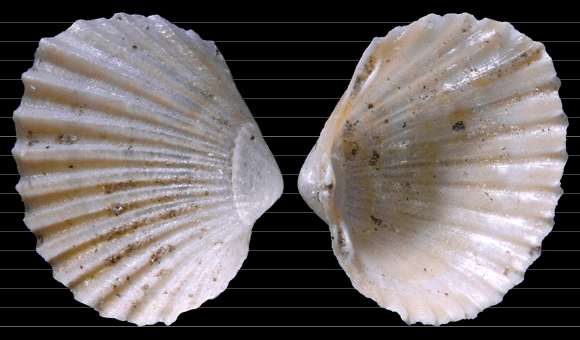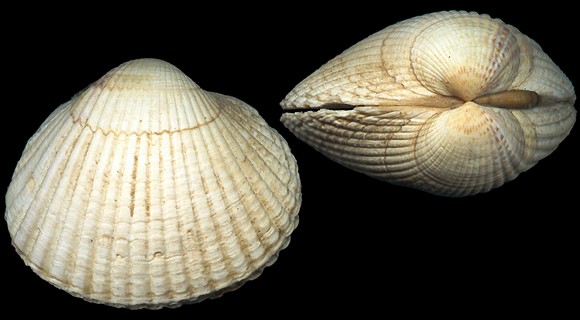
On soft sediments in sheltered places, intertidal and sublittoral, in salt as well as is brackish waters (euryhaline). Suspension feeder.
20-30m deep, off Doronatio, Toscana, W. Italy. 40mm.
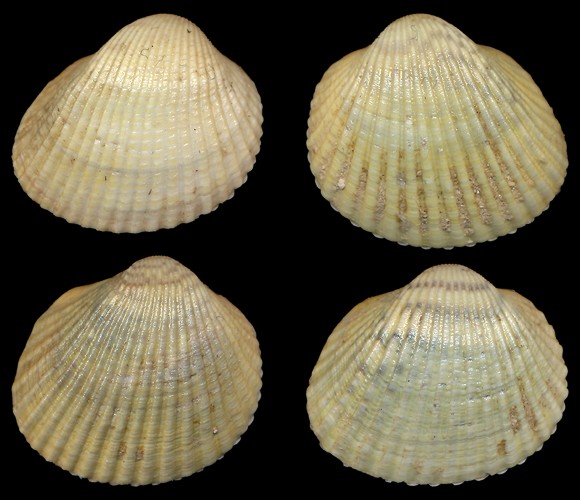
At low tide, in mud, near Bordj el Hissar, Chergui island, Kerkennah archipelago, S. Tunisia. 16-17mm.
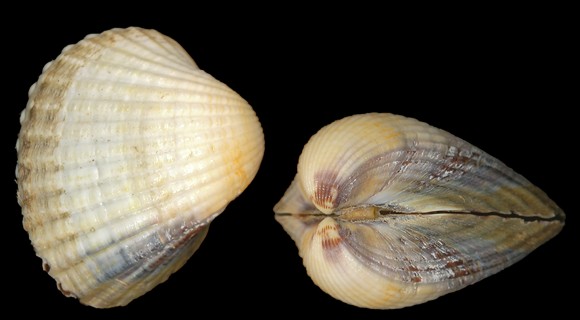
« Cardium glaucum: Testa cordata subantiquata antice glauca, costis viginti postice retrorsum imbricatis, natibus violaceis. » – J. G. Bruguière: Histoire naturelle des vers vol. I, Paris 1789. – 5m deep, Chioggia, Venezia, NE. Italy. 27mm.
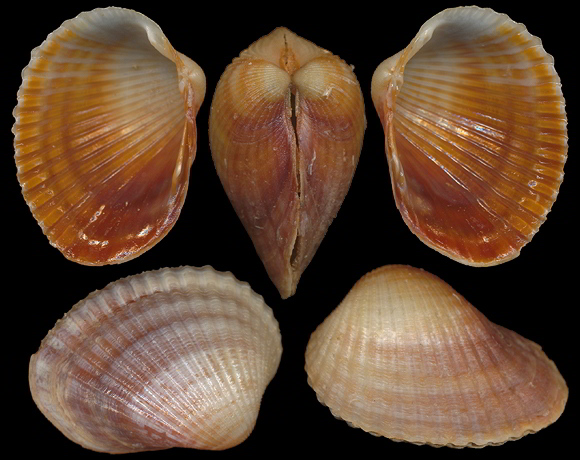
The thin-shelled lengthened specimens of the Ponto-Caspian group are rather different from the thicker-shelled Atlantic-Baltic group that colonizes the western Mediterranean. For more information about the phylogenic separation of these two groups, see Nikula & Väinölä: “Phylogeography of Cerastoderma glaucum across Europe: a major break in the Eastern Mediterranean”, Marine Biology vol.143-2, january 2003, p.339-350.
5-6m deep, Vouliagmeni marine lake, west of Perachora, Loutraki area, N. Korinthia, Greece. 26-26,5mm.
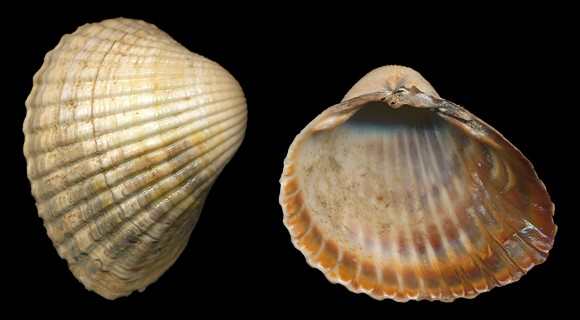
One characteristic that helps to distinguish between C. glaucum and C. edule is the ribbing: visible at the inside in glaucum, while it is not in edule, whose shell is always thicker.
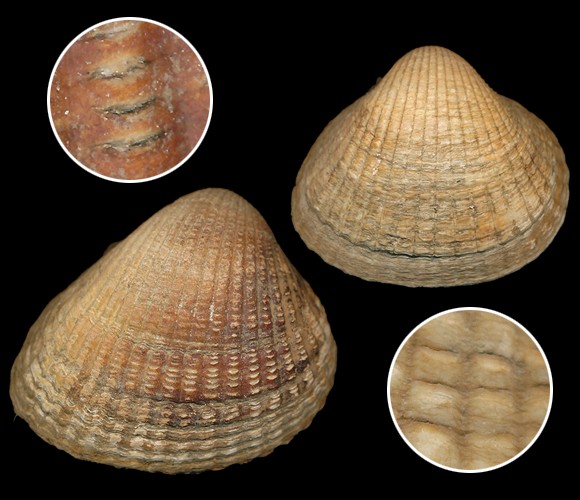
Left: 15m deep, off Saint Malo, N. Brittany. 46mm. Right: at low tide in muddy sand, Saint Vaast la Hougue, Cotentin. 40mm.
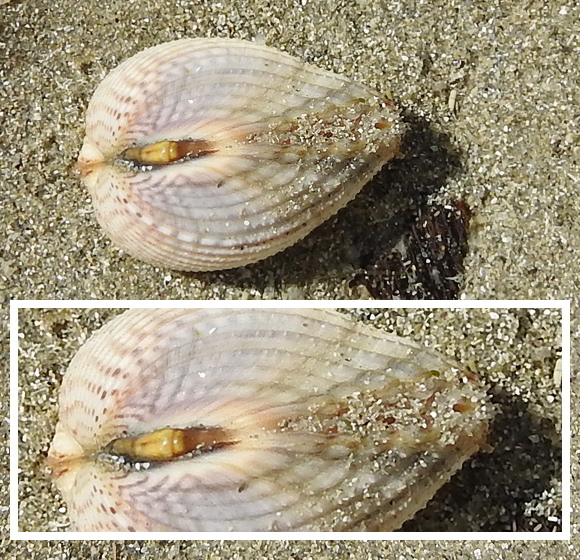
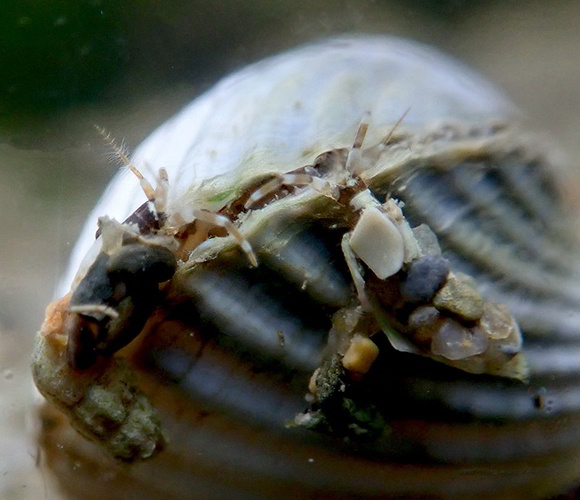
Two Amphipoda of the genus Centraloecetes Just 1983, trying to explore the mantle of a Cerastoderma glaucum at Leucate, Occitania, S. France. They inconvenience the animal so much that it cannot even expand its siphons serenely. Original picture provided by S. Clanzig (FR) – (CC BY-NC-SA).
